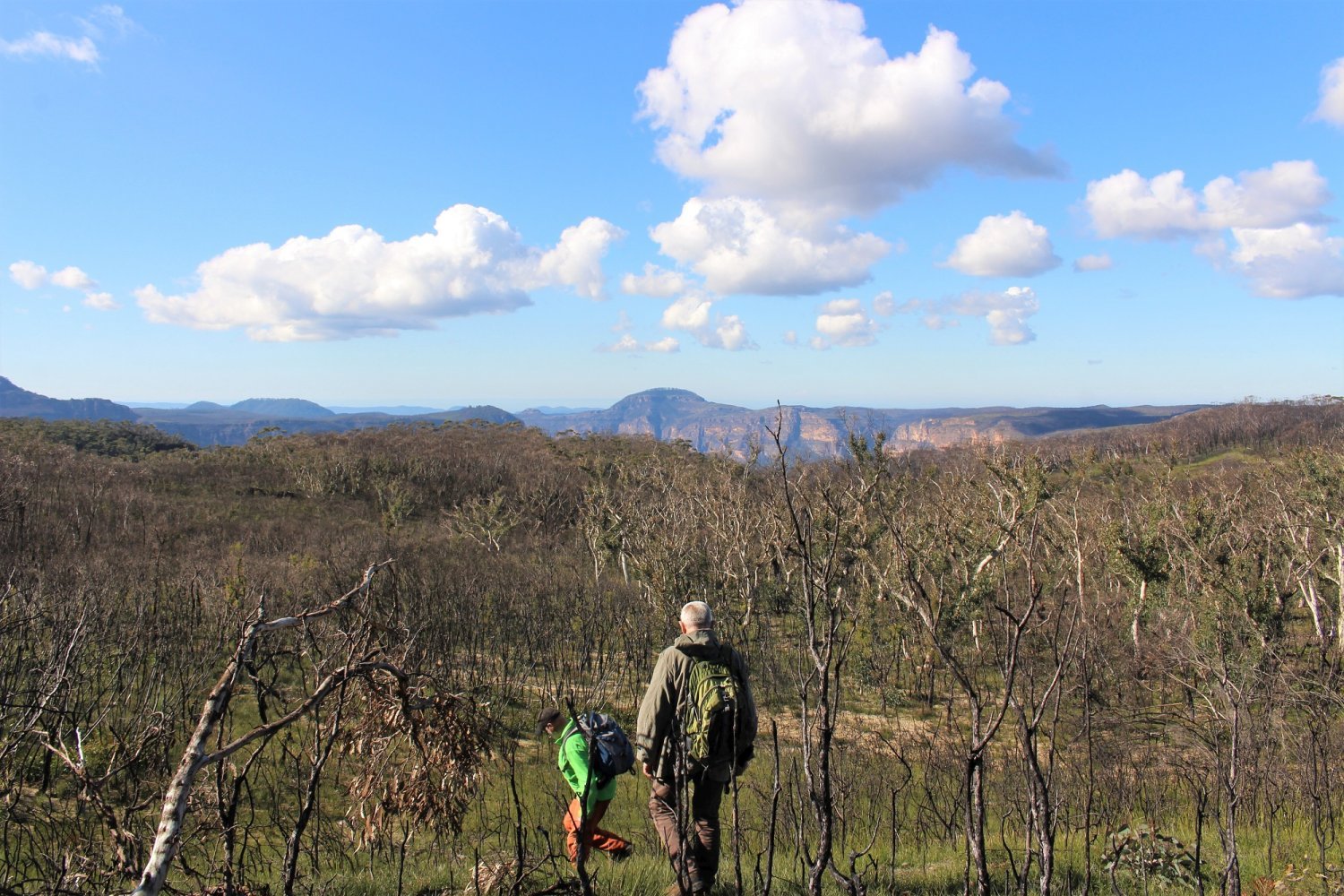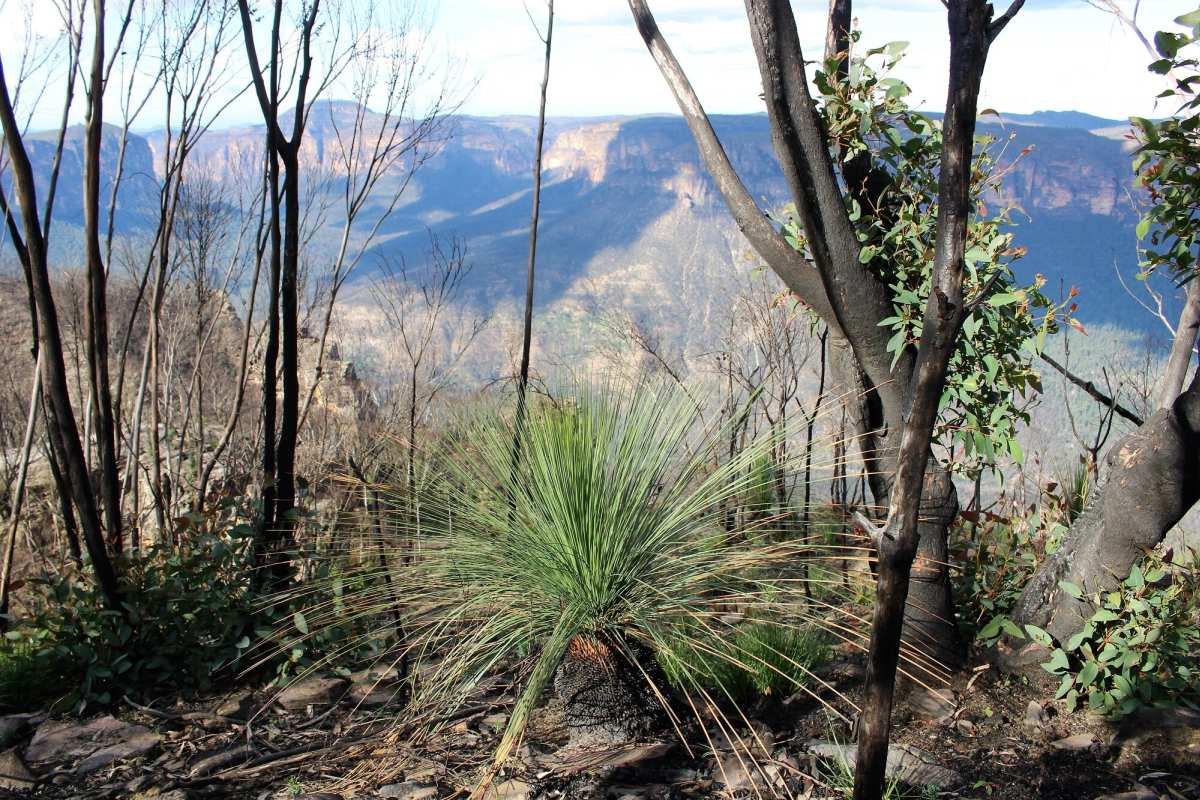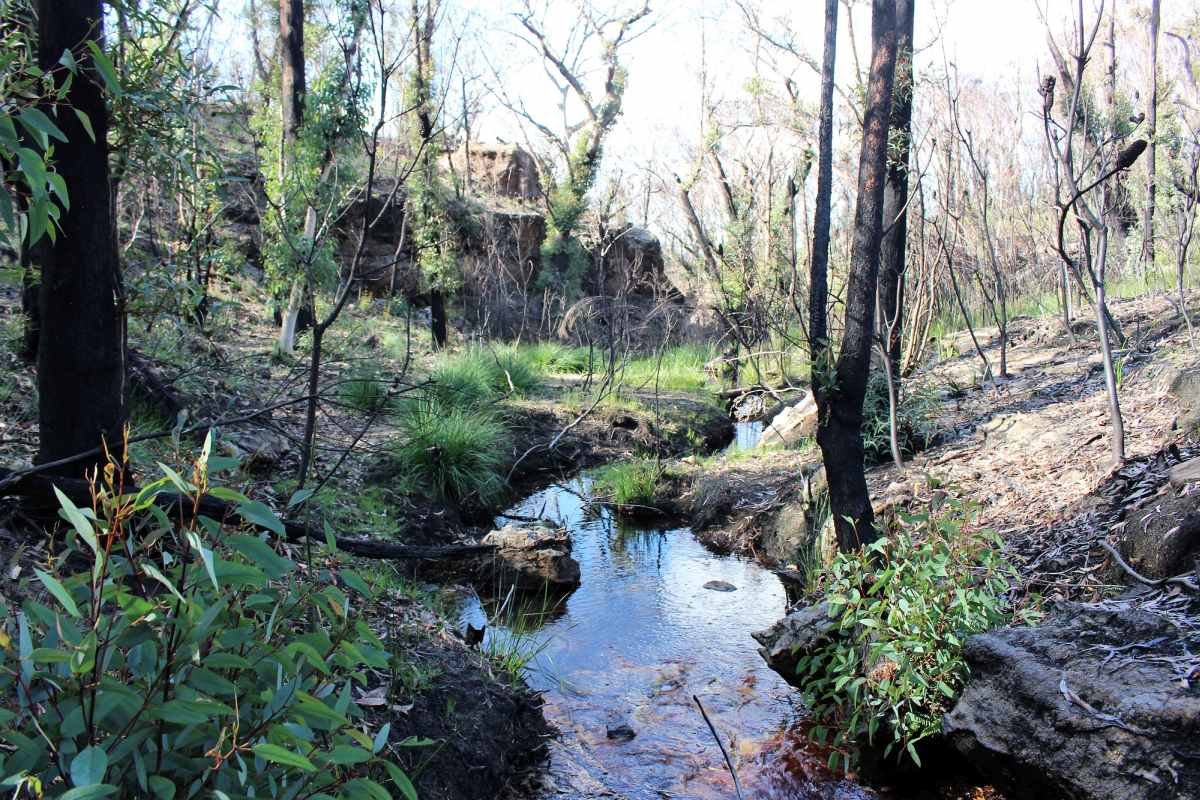Blue Mountains Tour - Sydney's fascinating bush ecosystem
It’s time we had a conversation about Epicormic growth and lignotubers!
Sydney Nimble Tours visited the Blue Mountains to enjoy a bush walk and see how the bush is recovering from the January fires.
And the news is we have a compelling recovery story. The new growth is vigorous and brilliant to see.
Lush ferns have come back in a small gully we visited, whilst the remarkably fire resistant grass trees look like they were never touched by fire.
Many of the Eucalypt trees are bursting with fresh pockets of growth.
Some of the Eucalypts have within a few months completely shed their burnt bark revealing a new layer of bark underneath (see first photo below).
More detail - a bit technical
The Australian bush is a fire prone ecosystem. It is a tough place. Two ways in which Eucalypt trees may regenerate is through epicormic growth and lignotubers.
Epicormic buds are dormant growth buds located deep beneath the bark of gum trees. Their positioning under the bark provides insulation from fire.
In normal times they are not active due to the hormones of buds above them. However after a fire or other stressful event these buds are activated.
Once activated the epicormic buds allow the tree to resprout with new growth in different places on the trunk and branches of the tree.
Lignotubers provide another way for some Eucalypt species to survive a bushfire.
Although a Eucalyptus tree may not survive an intense fire this form of regrowth occurs via large underground roots which remain alive.
New growth will sprout from these roots which are close to the fire damaged tree.
Can you see the two types of growth in the photos?
remaining patch of burnt bark
lush growth
rugged mountain types
grass trees are programmed to survive a fire
stream tranquility





